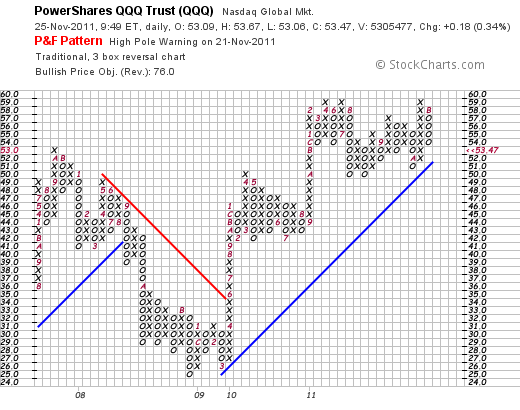|
|
Traditional P&F trendlines are drawn at defined angles to represent a specific rate of ascent or descent. A rising trendline, which is called a Bullish Support Line, rises at a 45-degree angle. The trend remains up, and bullish, as long as prices remain above the rising 45-degree trendline. A break below indicates that buying pressure is not strong enough to maintain this rate of ascent. A falling trendline, which is called a Bearish Resistance Line, falls at a 135-degree angle, which is the opposite of a 45-degree angle. The trend remains down, and bearish, as long as prices remain below this falling trendline. A break above indicates that buying pressure is increasing and selling pressure is decreasing.
Click this image for a live chart.
There is always a trendline in play on P&F charts. Once the blue Bullish Support Line is broken, a red Bearish Resistance Line is drawn from an important high, usually the high just before the break. This trendline then extends down until it is broken, and replaced by a rising trendline. Note that a trendline break requires an X in the box above the red Bearish Resistance Line or an O in the box below the blue Bullish Support Line. Simply equaling the trendline does not qualify as a break. The chart above shows the Nasdaq 100 ETF (QQQ) breaking the Bearish Resistance Line in June 2009 (red 6). Even though the ETF has traded sideways since late 2010, it has not yet broken the blue Bullish Support Line. You can read more on P&F charting in our ChartSchool.



